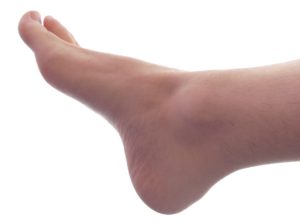What causes a Lisfranc Injury?
 Lisfranc injuries result from overloading the midfoot, which often occurs through either the twisting of the foot of from impact to the midfoot. This tears the supporting ligaments and can dislocate or fracture a bone. Anything that twists and overloads the midfoot can cause a Lisfranc injury, examples include:
Lisfranc injuries result from overloading the midfoot, which often occurs through either the twisting of the foot of from impact to the midfoot. This tears the supporting ligaments and can dislocate or fracture a bone. Anything that twists and overloads the midfoot can cause a Lisfranc injury, examples include:
- A heavy object falling on the foot
- Falling from a high height
- Car accidents
- Running where twisting of the foot and falling occurs
- Missing a step on a staircase
What are the symptoms?
Symptoms include:- Swelling
- Pain and tenderness at the midfoot
- Redness
- Bruising on the bottom of the foot
- Pain when standing, weight-bearing and physical activity
How is a Lisfranc injury treated?
The first step is to alleviate the painful symptoms. This can be done following the PRICE (protection, rest, ice, compression, elevation) principles. Treatment will then depend on the severity of the injury and whether a ligament sprain, fracture or dislocation has occurred. It should be noted that midfoot sprains take significantly longer to heal than regular ankle sprains. Because the midfoot takes on 2-3 time a person’s body weight on standing, reducing this pressure and minimising weight-bearing at the midfoot is a key part of treatment. Your GP and podiatrist will work together to effectively manage your injury. Severe injuries may require surgical intervention. Conservative treatments can include:- Cast, boot or crutches
- Orthotics to offload pressure as the injury heals
- Footwear assessment to ensure shoes are helping and not hindering recovery
- Physical therapy as the foot heals to stretch and strengthen the affected muscles








